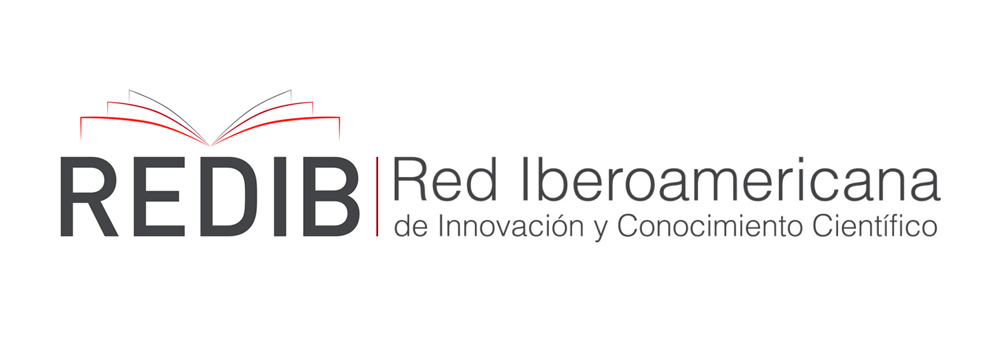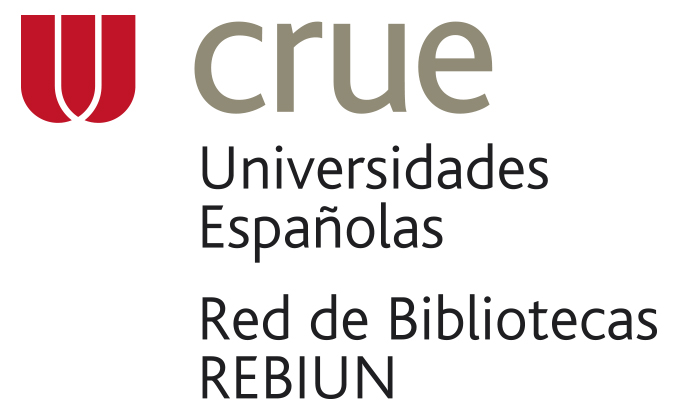Construction and validation of an instrument to assess global reading comprehension in third graders
DOI:
https://doi.org/10.35622/j.rie.2021.01.003Keywords:
reading comprehension, students’ evaluation, factor analysis, assessment instrumentsAbstract
According to national and international assessment results, there is a serious problem regarding global reading comprehension. However, there is disagreement over the instruments used to assess such skills. The goal of this study is to evaluate global reading comprehension in third graders. With the use of Confirmatory Factor Analysis (CFA), an instrument of 30 items and three factors was confirmed: main ideas, inferences, and contextualization of the concept; the instrument was applied to 803 students. We also found that the same construct is appropriate for different contextual variables (gender, shifts, and socioeconomic status). As result, CFA offers a satisfactory solution in both the factorial structure of the scales and the levels of internal consistency.
References
Alderson, J. C. (2000). Assessing Reading. Cambridge University Press. https://doi.org/10.1017/CBO9780511732935 DOI: https://doi.org/10.1017/CBO9780511732935
Alliende, F., Condemarín, M., & Milicic, N. (2004). Prueba CLP, formas paralelas: Manual para la aplicación de la prueba de comprensión lingüística progresiva, ocho niveles de lectura. Ediciones Universidad Católica de Chile.
Anckar, J. (2011). Assessing Foreign Language Listening Comprehension by Means of the Multiple-Choice Format : Processes and Products Joanna Anckar Assessing Foreign Language Listening Comprehension by Means of the Multiple-Choice Format : Processes and Products [University of Jyväskylä]. http://urn.fi/URN:ISBN:978-951-39-4410-0
Backhoff, E., Andrade, E., Sánchez, A., Peón, M., & Bouzas, A. (2006). El aprendizaje del Español y las Matemáticas en la educación básica en México: sexto de primaria y tercero de secundaria. INEE.
Backhoff, E., & Contreras, S. (2014). “Corrupción de la medida” e inflación de los resultados de enlace. Revista Mexicana de Investigación Educativa, 19(63), 1267–1283. http://www.redalyc.org/articulo.oa?id=14032016012
Backhoff, E., Sánchez, Á., Peón, M., & Andrade, E. (2010). Comprensión lectora y habilidades matemáticas de estudiantes de educación básica en México : 2000-2005 Reading Comprehension and Math Skills of Students in Basic Education in Mexico : 2000-2005. Revista Electrónica de Investigación Educativa, 12(1), 2000–2005. http://redie.uabc.mx/redie/article/view/242/402
Baños, J., García, M., Vázquez, T., Flores, C., Pardo, R., Salazar María, & Miguel, A. (2010). Curso básico de formación continua para maestros en servicio, planeación didáctica para el desarrollo de competencias en el aula 2010. Secretaría de Educación Pública.
Beck, I., McKeown, M., & Kucan, L. (2013). Bringing words to life: Robust vocabulary instruction. Guilford Press.
Bollen, K., & Curran, P. (2006). Latent curve models: A structural equation perspective. John Wiley & Sons. DOI: https://doi.org/10.1002/0471746096
Boudah, D. J. (2015). The Main Idea Strategy: A Strategy to Improve Reading Comprehension Through Inferential Thinking. Intervention in School and Clinic, 49(3), 148–155. https://doi.org/10.1177/1053451213496160 DOI: https://doi.org/10.1177/1053451213496160
Bovaird, J., & Koziol, N. (2012). Measurement Models for Ordered-Categorical Indicators. In R. H. Hoyle (Ed.), Handbook of Structural Equation Modeling (pp. 495–511). Guilford Press.
Browne, M. W., & Cudeck, R. (1992). Alternative Ways of Assessing Model Fit. Sociological Methods & Research, 21(2), 230–258. https://doi.org/10.1177/0049124192021002005 DOI: https://doi.org/10.1177/0049124192021002005
Cadavid-Ruiz, N., Quijano-Martínez, M.-C., Escobar, P., Rosas, R., & Tenorio, M. (2016). Validación de una prueba computarizada de lectura inicial en niños escolares colombianos. Ocnos: Revista de Estudios Sobre Lectura, 15, 98–109. https://doi.org/10.18239/ocnos DOI: https://doi.org/10.18239/ocnos_2016.15.2.1121
Canet-Juric, L., Andrés, M. L., & Ané, A. (2005). Modelos teóricos de comprensión lectora. Relaciones con prácticas pedagógicas de enseñanza y aprensizaje. XII Jornadas de Investigación y Primer Encuentro de Investigadores En Psicología Del Mercosur, 410–413. https://www.aacademica.org/000-051/55.pdf
Caracas, B., & Ornelas, M. (2019). La evaluación de la comprensión lectora en México. Perfiles Educativos, XLI(164), 8–27. https://doi.org/10.22201/iisue.24486167e.2019.164.59087 DOI: https://doi.org/10.22201/iisue.24486167e.2019.164.59087
Clarke, P., Truelove, E., Hulme, C., & Snowling, M. (2013). Developing reading comprehension. Wiley-Blackwell. DOI: https://doi.org/10.1002/9781118606711
Cook, A. E., & O’Brien, E. J. (2014). Knowledge Activation, Integration, and Validation During Narrative Text Comprehension. Discourse Processes, 51(1–2), 26–49. https://doi.org/10.1080/0163853X.2013.855107 DOI: https://doi.org/10.1080/0163853X.2013.855107
Cromley, J. G., & Azevedo, R. (2007). Testing and refining the direct and inferential mediation model of reading comprehension. Journal of Educational Psychology, 99(2), 311–325. https://doi.org/10.1037/0022-0663.99.2.311 DOI: https://doi.org/10.1037/0022-0663.99.2.311
De la Garza, J., Morales-Serrano, B., & González-Cavazos, B. (2013). Análisis Estadístico-Multivariado: Un enfoque teórico y práctico. McGraw-Hill.
Defior, S. (2000). Las dificultades de aprendizaje: lectura, escritura, matemáticas. Aljibe.
Del Puerto, L. G., Thoms, C., & Boscarino, E. (2018). Reading comprehension of first year university students. Revista Científica de La UCSA, 5(2), 11–25. https://doi.org/10.18004/ucsa/2409-8752/2018.005(02)011-025 DOI: https://doi.org/10.18004/ucsa/2409-8752/2018.005(02)011-025
Escudero, I. (2010). Las inferencias en la comprensión lectora: Una ventana hacia los procesos cognitivos en segundas lenguas. Revista Nebrija de Lingüística Aplicada a La Enseñanza de Lenguas, 7, 1–31. https://doi.org/10.26378/rnlael47127
García-Madruga, J. A., Gutiérrez-Martínez, F., & Carriedo-López, N. (2002). Psicología evolutiva II: Desarrollo Cognitivo y Lingüístico. UNED.
Geiser, C., Burns, G. L., & Servera, M. (2014). Testing for measurement invariance and latent mean differences across methods: interesting incremental information from multitrait-multimethod studies. Frontiers in Psychology, 5. https://doi.org/10.3389/fpsyg.2014.01216 DOI: https://doi.org/10.3389/fpsyg.2014.01216
González-Trujillo, M. C. (2005). Children’s reading comprehension: Morphosyntax and Prosody in action [Universidad de Granada]. http://hera.ugr.es/tesisugr/15808932.pdf
Grabe, W. (2008). Reading in a Second Language. Cambridge University Press. https://doi.org/10.1017/CBO9781139150484 DOI: https://doi.org/10.1017/CBO9781139150484
Grabe, W., & Jiang, X. (2014). The Companion to Language Assessment. In A. J. Kunnan (Ed.), The companion to language assessment (pp. 185–200). Wiley-Blackwell. DOI: https://doi.org/10.1002/9781118411360.wbcla060
Gutiérrez, D., Aguiar, D., & Díaz, M. (2015). Contexto escolar y comprensión lectora en la prueba ENLACE en bachilleratos de Jalisco. CPU-e, Revista de Investigación Educativa, 0(20), 1–24. https://doi.org/10.25009/cpue.v0i20.1285 DOI: https://doi.org/10.25009/cpue.v0i20.1285
Hedgcok, J., & Ferris, D. (2009). Teaching Readers of English: Students, Texts, and Contexts. Routledge. DOI: https://doi.org/10.4324/9780203880265
Hu, L., & Bentler, P. M. (1999). Cutoff criteria for fit indexes in covariance structure analysis: Conventional criteria versus new alternatives. Structural Equation Modeling: A Multidisciplinary Journal, 6(1), 1–55. https://doi.org/10.1080/10705519909540118 DOI: https://doi.org/10.1080/10705519909540118
Kenny, D. (2011). Multiple Groups. http://davidakenny.net/cm/mgroups.htm
Kieras, D., & Just, M. (2018). New methods in reading comprehension research. Routledge. DOI: https://doi.org/10.4324/9780429505379
Kintsch, W., & van Dijk, T. A. (1978). Toward a model of text comprehension and production. Psychological Review, 85(5), 363–394. https://doi.org/10.1037/0033-295X.85.5.363 DOI: https://doi.org/10.1037//0033-295X.85.5.363
Kismiantini, -, Montesinos-Lopez, O. A., Garcia-Martinez, J. J., & Franco-Perez, E. (2014). Analyzing the Factors of Job Satisfaction in a Mexican Hospital with Binary Indicators by Confirmatory Factor Analysis. International Journal of Business and Management, 9(8), 61–83. https://doi.org/10.5539/ijbm.v9n8p61 DOI: https://doi.org/10.5539/ijbm.v9n8p61
Kispal, A. (2008). Effective Teaching of Inference Skills for Reading. https://files.eric.ed.gov/fulltext/ED501868.pdf
Kline, R. (2011). Principles and Practice of Structural Equation Modeling. The Guilford Press.
MacCallum, R. C., & Browne, M. W. (1993). The use of causal indicators in covariance structure models: some practical issues. Psychological Bulletin, 114(3), 533–541. http://www.ncbi.nlm.nih.gov/pubmed/8272469 DOI: https://doi.org/10.1037//0033-2909.114.3.533
Madero, I., & Gómez, L. (2013). El proceso de comprensión lectora en alumnos de tercero de secundaria. Revista Mexicana de Investigacion Educativa, 18(56), 113–139.
Martínez, R. (2015). Las pruebas ENLACE y EXCALE. Un estudio de validación. Instituto Nacional para la Evaluación de la Educación. INEE.
McNamara, D. S., & Magliano, J. (2009). Chapter 9 Toward a Comprehensive Model of Comprehension. In B. Ross (Ed.), Psychology of Learning and Motivation - Advances in Research and Theory (51st ed., pp. 297–384). Academic Press. https://doi.org/10.1016/S0079-7421(09)51009-2 DOI: https://doi.org/10.1016/S0079-7421(09)51009-2
Nation, K., Cocksey, J., Taylor, J. S. H., & Bishop, D. V. M. (2010). A longitudinal investigation of early reading and language skills in children with poor reading comprehension. Journal of Child Psychology and Psychiatry, 51(9), 1031–1039. https://doi.org/10.1111/j.1469-7610.2010.02254.x DOI: https://doi.org/10.1111/j.1469-7610.2010.02254.x
Neira-Martínez, A., & Castro-Yáñez, G. (2013). Análisis de un instrumento estandarizado para la evaluación de la comprensión lectora a partir de un modelo psicolingüístico. Estudios Pedagógicos (Valdivia), 39(2), 231–249. https://doi.org/10.4067/S0718-07052013000200015 DOI: https://doi.org/10.4067/S0718-07052013000200015
Neira, A. C., Reyes, F. T., & Riffo, B. E. (2015). Experiencia académica y estrategias de comprensión lectora en estudiantes universitarios de primer año. Literatura y Lingüística, 31, 221–244. https://doi.org/10.4067/S0716-58112015000100012 DOI: https://doi.org/10.4067/S0716-58112015000100012
Newton, J., Ferris, D., Goh, C., Grabe, W., Stoller, F., & Vandergrift, L. (2018). Teaching English to Second Language Learners in Academic Contexts: Reading, Writing, Listening, and Speaking. Routledge. DOI: https://doi.org/10.4324/9781315626949
O’Reilly, T., Wang, Z., & Sabatini, J. (2019). How Much Knowledge Is Too Little? When a Lack of Knowledge Becomes a Barrier to Comprehension. Psychological Science, 30(9), 1344–1351. https://doi.org/10.1177/0956797619862276 DOI: https://doi.org/10.1177/0956797619862276
Paris, S. G., Wasik, B. A., & Turner, J. C. (1991). The development of strategic readers. In M. L. Kamil, P. B. Mosenthal, & P. D. Pearson (Eds.), Handbook of reading research: Vol. II (pp. 609–640). Longman.
Pérez-Zorrilla, M. (2005). Evaluación de la comprensión lectora: dificultades y limitaciones. Revista de Educación, 121–138. http://www.revistaeducacion.educacion.es/re2005/re2005_10.pdf
Perrusquia, E., Carranza, L., Vázquez, T., García, M., & Meza, F. (2010). Curso básico de formación continua para maestros en servicio, planeación didáctica para el desarrollo de competencias en el aula 2010.
Ramos-Morales, C. (2006). Elaboración De Un Instrumento Para Medir Comprensión Lectora. Onomázein, 14(1983), 197–210. DOI: https://doi.org/10.7764/onomazein.14.07
Rouet, J.-F., Britt, M. A., & Durik, A. M. (2017). RESOLV: Readers’ Representation of Reading Contexts and Tasks. Educational Psychologist, 52(3), 200–215. https://doi.org/10.1080/00461520.2017.1329015 DOI: https://doi.org/10.1080/00461520.2017.1329015
Sánchez, S., Grajales, I., & García, E. (2011). Un instrumento para el diagnóstico de habilidades de lectura de los estudiantes de la licenciatura en enfermería, UNSIS. Perfiles Educativos, 33(132), 110–126.
Santos, M. A., Sotelino, A., Jover, G., Naval, C., Álvarez, J. L., Vázquez, V., & Sotelino, A. (2017). Diseño y Validación de un Cuestionario sobre Práctica Docente Actitud del Profesorado Universitario hacia la Innovación (CUPAIN). Educación XX1, 20(2), 39–71. https://doi.org/10.5944/educXX1.17806 DOI: https://doi.org/10.5944/educxx1.19031
Secretaría de Educación Pública. (2013). Prueba ENLACE. http://www.enlace.sep.gob.mx
Serrano, M.-Á., Vidal-Abarca, E., & Ferrer, A. (2017). Decisiones Estratégicas de Lectura y Rendimiento en Tareas de Competencia Lectora Similares a PISA. Educación XX1, 20(2), 279–297. https://doi.org/10.5944/educXX1.12076 DOI: https://doi.org/10.5944/educxx1.19042
Taylor, W. L. (1953). “Cloze Procedure”: A New Tool for Measuring Readability. Journalism Quarterly, 30(4), 415–433. https://doi.org/10.1177/107769905303000401 DOI: https://doi.org/10.1177/107769905303000401
Tengberg, M. (2018). Validation of sub-constructs in reading comprehension tests using teachers’ classification of cognitive targets. Language Assessment Quarterly, 15(2), 169–182. https://doi.org/10.1080/15434303.2018.1448820 DOI: https://doi.org/10.1080/15434303.2018.1448820
van den Broek, P. (2012). Individual and developmental differences in reading comprehension: Assessing cognitive processes and outcomes. In P. Sabatini, E. R. Albro, & T. O’Reilly (Eds.), Measuring up: Advances in how to assess reading ability (pp. 39–58). Rowman & Littlefield Education.
Yu, C. Y., & Muthen, B. (2002). Evaluation of model fit indices for latent variable models with categorical and continuous outcomes. Annual Meeting of the American Educational Research Association.
Published
Issue
Section
License
Copyright (c) 2021 Laura Gaytan-Lugo, Osval Montesinos-López, Pablo Alcaraz-Valencia, José Fernández-Robles

This work is licensed under a Creative Commons Attribution 4.0 International License.



























